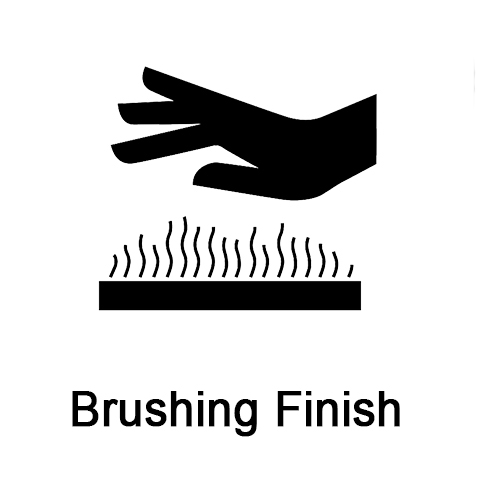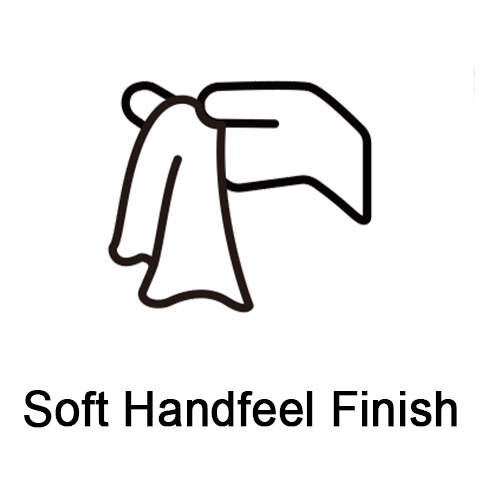How to know the warp and weft density of woven fabric?
For those who are engaged in fabric procurement, fabric matching or clothing design, understanding the weft density of woven fabrics is very helpful for you to choose fabrics.
Changes in warp and weft density, yarn count and organization have an important impact on fabric style. With the same warp and weft yarn count and weave structure, the appearance of fabrics with different warp and weft density is very different. For example, poplin and plain cloth are plain weaves. The ratio of warp density and weft density of poplin is 1.8~2.2:1. The warp density is obviously greater than that of weft. Good, rich in feel and vision, clean and smooth cloth, fine texture, full grain, luster and softness, soft and smooth texture, but the same yarn count flat cloth (warp and weft density is relatively close) does not have this effect. The perception is simple.
In addition, we analyze the warp and weft density of the fabric, which can be used to calculate its grammage, and can understand whether the fabric has cut corners.
So how can we read the latitude and longitude density of a piece of fabric accurately and quickly? Some friends may be using a counting convex lens density analyzer. This tool is more time-consuming, and it is a bit more difficult for people with poor eyesight, although some convex lenses are equipped with a light source to help count.
As shown below:
.jpg)
.jpg)
.jpg)
For those of us who deal with woven fabrics all day, we don't need the above analyzer to analyze the warp and weft density, because it is too time-consuming to quickly and accurately analyze the model that the customer gave us. Generally, when we go to the customer, if the customer gives us a piece of fabric, we must immediately analyze the warp and weft density and structure in order to respond quickly. The tool we use is a density mirror, which can help us read out the density of the woven fabric in a short time.
As shown below:
.jpg)
As you can see, a series of numbers are listed above and below the density mirror. The numbers above represent the number of lines per centimeter, and the bottom represent the number of lines per inch. When reading, you can read the upper and lower numbers, but the unit is different. When choosing a density mirror, it is necessary to pay attention to what density range the fabric is usually analyzed in. As shown in the density mirror, its reading range is 45-160 bars/inch. However, it is generally difficult to read near 45 or 160, so this density mirror is suitable for reading range of 46-150/inch.
So how do you use this density mirror? It's actually very simple. When you want to read the density in the weft direction, you put the density mirror on the fabric along the weft direction, and you will find a rhombus appears on the density mirror. The tip of the diamond refers to the density in the weft direction, and the upper tip is the number per centimeter , The lower tip is the number per inch. The conversion results of these two units are the same.
As shown:


Similarly, by placing the density mirror along the meridional direction, the meridional density can be read.
As shown:

You can see that the warp density is relatively high, about 140/inch. Relative to the side, the rhombus is not easy to observe, so if the density is too high, the rhombus is not easy to appear, and the reading is easy to deviate.
Some fabrics are easier to read warp and weft density, such as low density light color low count fabric, but some fabrics are more difficult to read warp and weft density, that is high density dark high count fabric. In practice, we have summarized an empirical method to assist in reading the density of this high-density dark cloth, that is, lifting the cloth under the light source and putting the density mirror on it. The diamond number can be easily read through the light source.
As shown:

Finally, some friends used density mirrors to detect the latitude and longitude density of the fabric on their hands, and found that the density measured was different from the specifications reported by the fabric factory, and the difference was quite large. Don't be anxious. For fabrics that have undergone post-processing, the latitude and longitude density will change, because the latitude and longitude direction passes through a series of physical effects, especially the effect of shrinkage. It is normal for the latitude and longitude density to change. For example, the density of our 128*60 cotton twill dyed finished cloth may reach 133*61. Therefore, it is necessary to consider the impact of finishing and combine with the weight to judge the change in fabric quality.
The above is Tianyu Textile's method for you to quickly know the warp and weft density of woven fabrics. To purchase high-quality woven fabrics, please choose Tianyu Textile. The factory directly sells them. The price and quality are very good!







